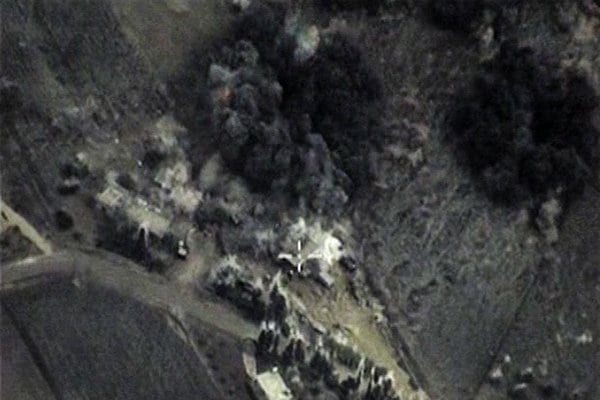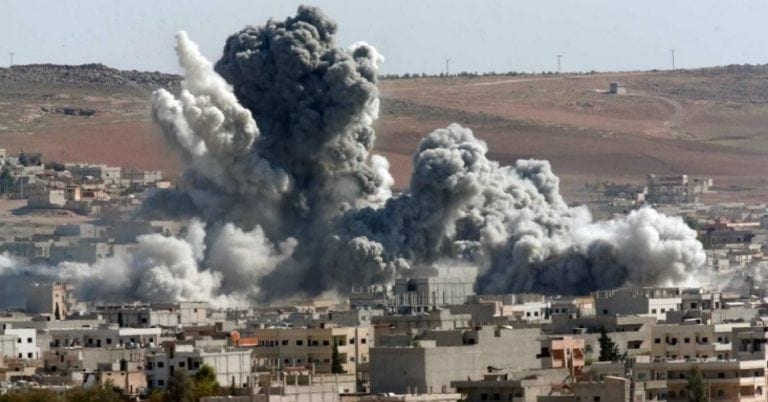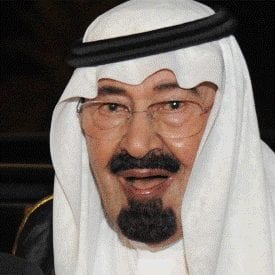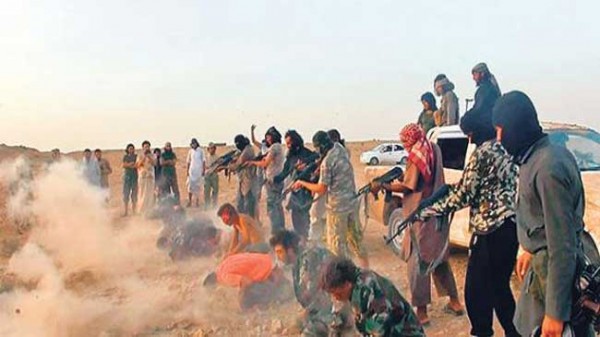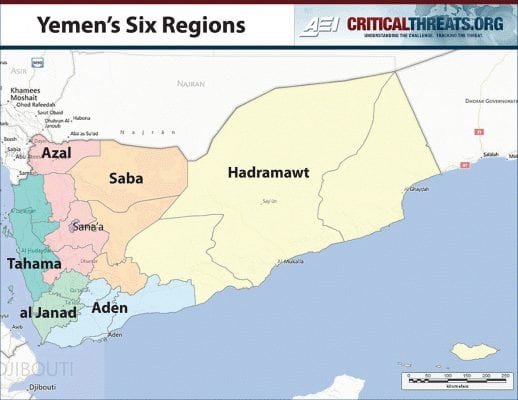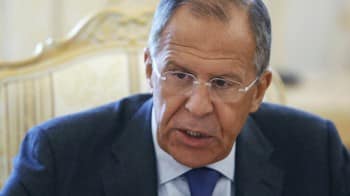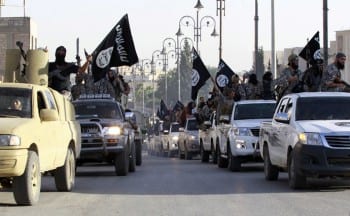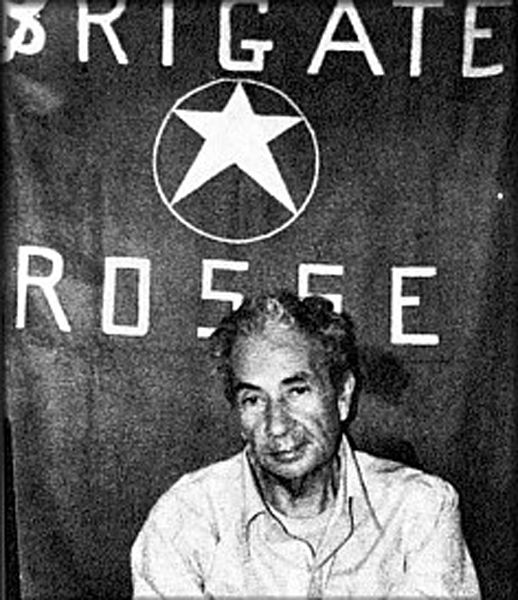
“Collateral Murder”: Evidence of Genocide
by Kieran Kelly
“In Iraq, you can’t put pink gloves on Apache helicopter pilots and send them into the Ultimate Fighting ring and ask them to take a knee. These are attack pilots wearing gloves of steel, and they go into the ring throwing powerful punches of explosive steel. They are there to win, and they will win.” Lt. Col. Chris Wallach
The video known as “Collateral Murder” is strong evidence of genocide being carried out by the US against the people of Iraq. Hidden in the horrors of its brutality is a rich historical record revealing an armed force which systematically targets and kills non-combatants. The events shown are war crimes violating the principle of non-combatant immunity in numerous clearly illegal ways including attacking those rendering aid to the wounded. They are also evidence of genocide because there are clear indications that these war crimes are representative of enshrined procedures. They indicate that the ambiguities of the US Rules of Engagement mandate the systematic mass murder of civilians when applied by US personnel.
They indicate something of a tactical, strategic and doctrinal approach that radically violates the fundamental obligations to distinguish between civilians and enemy personnel and the combatant status of enemies. Finally they indicate something about the way in which the US indoctrinates its personnel in a way guaranteed to create murderers.
Lt. Col. Wallach was the commander of the aircrew. He recently said: “Ultimately, my combat pilots at the scene did the best they could under extreme and surreal conditions.” However, we now know that the only incident to occur before we are able to see what is occurring was a report of small arms fire being heard. If there is a surreal aspect to any of this it comes from the minds of the aircrew and those who command both air and ground forces. I am going to go through exactly what it is that the gun camera footage shows. It shows a massacre of non-combatants, followed by the murder of rescuers, and finally a more obscure sequence which definitely involves another murder of rescuers.
Former US Secretary of Defense Robert Gates said of this footage: “You’re looking at a situation through a soda straw, and you have no context or perspective.” Therefore, after describing exactly what is shown, taking into account exactly what is known and exactly what is not known from the footage, I will provide that context that Gates calls for. But the context does not, or should not, counter what our eyes and ears reveal to us. On the contrary, the very evidence that apologists like Gates and Wallach produce to show that the aircrew were legitimate in their actions is in fact evidence that their behaviours are not isolated. This is very strong evidence that by the manner in which, in practice, the US defines “hostile intent”; the manner in which it practices its doctrine of “force protection”; and the manner in which it indoctrinates and situates its forces, the US was systematically murdering non-combatants. In this case killing non-combatants inextricably means killing civilians. Placed in the context of more than two decades of direct and indirect destruction of Iraq in social, political, biological, economic, cultural, ecological, and physical terms, this systematic killing is clear and compelling evidence of genocide. Those who insist that this is merely warfare join the vast ranks of genocide perpetrators, deniers and apologists who insist that other genocides were warfare with inevitable, if regrettable, instances of civilian death.
As I have written elsewhere, all of the common claims of genocide deniers are regularly applied to US “military” actions, but they tend to be overlooked as they are so pervasive that they are seldom examined or challenged. Ultimately denial of US genocide relies on people having a vague notion that genocide involves actions like the mass gassings at Nazi death camps. But the word genocide was coined by someone who did not know at that time about the mass gassings and who applied the word to far more that the Nazi project to exterminate Europe’s Jews.
Genocide??
So, what exactly is genocide? The man who coined the term, Raph>äel Lemkin, was a Polish Jew and a legal scholar. Impelled by knowledge of the Armenian Holocaust as well as the history of state sanctioned or controlled pogroms against Jews, Lemkin devoted much of his life to understanding mass violence against ethnic populations. In 1933 he proposed that there be an international law which, among other acts, prohibited acts of “barbarity” and “vandalism”. “Barbarity” was conceived as violence against members of a “collectivity” on the basis that they were of that “collectivity” and “with the goal of its extermination”. “Vandalism” was the destruction of the “cultural or artistic heritage” of a “collectivity … with the goal of its extermination”.
The German occupation of most of Europe was the horrific crucible in which Lemkin synthesised “vandalism” and “barbarity”. He recognised a greater process of which they were both part – the process he called “genocide”. Genocidewas “a war not merely against states and their armies but against peoples.” Extermination, or the intent to exterminate, was no longer a requisite. The occupant could impose a “national pattern” onto the land, once it was cleansed by killing or forced migration, or onto the people themselves. And despite knowing that Europe’s Jews were slated for complete annihilation, Lemkin’s examples of genocide included such things as forcing the people of Luxembourg to take German names. His most common exemplar of genocide was the treatment of Poland – a comprehensive and systematic genocide in which killing people was only one of many forms of genocidal destruction.
I think it is important that we realise that the fluidity of identity does not allow for actual extermination to be undertaken as a project. Genocide is a schizophrenic undertaking full of bizarre contradictions such that it cannot truly be said that the Germans attempted to exterminate the Jews, or even Europe’s Jews. The Germans had immense difficulties in even defining who was Jewish for a start. They said Jews were a “race” but ultimately they relied on confessional identification to define them. As Yehuda Bauer wrote: “One can see how confused Nazi racism was when Jewish grandparents were defined by religion rather than so-called racial criteria.”(1) As well as the fact that many with Jewish heritage would inevitably successfully evade detection, in the Nuremburg Laws (and later when deciding who to kill at Wannsee), exemptions were made on various criteria, such as being a decorated war hero. However defined, there were Jews in the German military(2) and there were Jewish civilians living unincarcerated in Berlin when Soviet troops arrived.(3)
So, as the Genocide Convention outlines, genocide is an attack on people, rather than states, with the “intent to destroy in whole or in part, a national, ethnical, racial or religious group, as such….” Lemkin referred to these collectivities as having a “biological structure”. There is a genetic interconnection involved here, but that does not mean that Lemkin believed in Nazi racial theories or any racist or racialist notions. The most evident proof of this is the inclusion in both his own work and in the Genocide Convention the practice of “transferring the children of the group to another group”. If genocides were truly about racial hygiene and racial hatred that would hardly be a recognised component, would it?
If it is not about race, then what is it about? Though he never articulated it, the answer stared Lemkin right in the face and he obviously grasped it at an unconscious or intuitive level. If we refer to one of these collectivities as a genos, what ties the genos together is not “biological interrelation” but rather personal interconnection and, most particularly, familial interrelation.
Genocide is about Power not Hatred
I want to outline a simplified cartoon narrative, just to illustrate a point: In feudal Europe mass violence was used in acts of war or banditry which were only distinguishable from each other by scale and the rank of participants. A Baron might conquer the demesne of another Baron just as one King might conquer the realm of another King. In relative terms the peasants of the demesne or the realm might have had very little concern over who exactly ruled. The change in rulers would not be akin to a foreign occupation as we would currently understand it. By the time of Napoleon, however, it was beginning to be a little different. People had started to develop a national consciousness. The national genos associated itself with a territory of land and aspired to a nation-state polity based on that (often rather generous) sense of territorial entitlement. By 1871, the inhabitants of Alsace-Lorraine were quite unhappy at being made German. Nationalism would become the dominant political ideology for the entire twentieth century. The multinational and largely interchangeable feudal ruling class was gone. This was not an unprecedented situation, but it was something that Europe had not faced for since the times of Charlemagne (well, in reality it had, but I’m still in cartoon generalisation mode here, so bear with me).
Now, there are many ways in which an external imperial power might exercise hegemony over the territory of a national genos in various ways, but they are limited by the strength of national feeling and, perhaps more importantly, the hegemony cannot be stable because national sentiment might at any time cohere around demands for the end to imperial hegemony. A transnational quasi-imperial system of governance has arisen specifically to limit economic sovereignty, for example. There are good arguments to be made that this is in itself genocidal and that the poorer nations of the world are subject to “structural genocide”. The carrots and sticks of global governance, however, do not apply to nation states that are reasonably populous, but more generously resourced, with a strong potential for industrial development. If they have a national consciousness that does not allow foreign dominance, which includes rule by those who are not loyal to the national genos, then there is no military way of establishing dominance. It is not the sovereign that is the problem, it is the people, hence the recourse to genocide.
War or Genocide?
If genocide is “war against peoples” how can it be distinguished from normal war? If we go back to German conquests in World War II, it is quite easy to distinguish between primarily military operations in the West and the largely genocidal actions in the East. The conquest and occupation of Western Europe was undeniably brutal but (leaving aside the genocide of Jews and Roma) German actions, including the killing of innocents, were taken as a means of countering physical threats to German forces. In the East, by contrast, inflicting starvation was more for the purposes of cleansing land of unwanted inhabitants than for feeding German troops. Security was the excuse for massacres, not the reason for massacres. When armed resistance began behind the advancing German front in the East, Hitler himself said: “This partisan war has its advantages as well. It gives us the opportunity to stamp out everything that stands against us.”(5)
As a general rule of thumb, then, one might look at a conquest and occupation and ask: does this more resemble what the Germans did in Belgium or what they did in Poland? For anyone acquainted with the comprehensive and widespread nature of destruction inflicted on Iraq during the occupation – destruction which was economic, political, cultural, moral, intellectual, social and environmental as well as physically deadly to Iraqis – the answer is all too clear. More Poles died than Iraqis, but to say of that the US occupation of Iraq was not as bad as the German occupation of Poland is to say very little indeed. The Germans wanted to go much further in a shorter time than did the US. They wanted to extinguish Poland as an entity. In contrast the systematic destruction of Iraq began 23 years ago with sanctions and bombing. 7 million Poles died in less than 6 years – most were killed directly. Around 2.5 million Iraqis have died, perhaps more – roughly half through violence and half through malnutrition and disease. Despite this, the similarities are more striking than the differences. Much like the German view of Poland, US policy elites (such as Joe Biden, Peter Galbraith and the Council on Foreign Relations) openly talked of “the end of Iraq” – proposing a partition which would be the destruction of Iraq as a nation-state.
What does the Collateral Murder Video Reveal?
Along with the bigger picture of comprehensive and manifold destruction that is the Iraq Genocide, it is possible to see indications of genocide at a smaller scale. If there are two types of war – genocide and military war – then which sort involves the systematic killing of civilians? The Collateral Murder video leaves many unanswered questions, but one thing it does show is that the killing that occurs is indicative of more widespread behaviours.
1) Are the Victims Combatants? Are they Armed?
The footage we see is from one of two participating Apache helicopter gunships. The call-sign of the gunship, or rather its “Aerial Weapons Team”, is Crazy Horse One Eight. The voice of the gunner who shoots is distinguishable throughout. He is controlling the gun camera and we can see what he sees. Further, it is clear from the fact he refers to things indicated by his sights that someone else, presumably the pilot, is seeing the same video feed and using it to make judgements. This is very important because the viewer can tell that they did not make a positive identification of weapons when initially claimed as, even with the benefit of going through one frame at a time, it is not possible to make a positive identification of weapons. It is also possible to tell that they are lying frequently about what they can see.


Our first view of the first group of victims (Pic 1) shows over a dozen men who are clearly acting in a casual manner. In general they are progressing but here is also milling and conversation going on amongst them. Two of them have visible shoulder straps. These are from cameras and they look like cameras considerably more than they look like weapons. They identify one other “weapon” which is inflated to the claim that there are “five to six” armed individuals. Pic 2 and the frame immediately preceding it show a long object that could easily be mistaken for an RPG (rocket propelled grenade launcher). However this is not what the gunner will later claim is an RPG and having viewed the entire footage it seems almost inconceivable that the object is in fact an RPG.


In Pic 3 we can see the object that the gunner claims is an RPG. It is a camera. It looks a lot more like a camera than an RPG. The reader is invited to review the footage starting at about 00:02:30 and determine whether they think it is feasible that the gunner has made a “positive identification” as required by the ROE (rules of engagement). As for the long object that looked a little like an RPG we can see in Pic 4 that it is now being used like a crutch. In our next fleeting glimpse it looks fairly insubstantial, lending some credence to the speculation that it might actually have been a tripod. There is no visible RPG tube later. Mention is made by ground forces that they believe there might be an RPG round under a body, but bear in mind the only claim that there was an RPG was of something we know for certain was a camera. Further, if it had been an RPG it would pose no threat to the gunship which was far beyond its effective range and too fast to be effectively targeted by a weapon designed for use against armoured ground vehicles. One writer described it as like trying to hit a wasp with a slingshot. And then there is the unexplained statement by the gunner: “Yeah, we had a guy shooting – and now he’s behind the building.” Someone responds as if he was referring to something else (30 minutes earlier small arms fire was heard in the area but its source never identified – that is the only evidence of hostile activity in the area at this point) but the context seems to suggest that he is saying that the “guy shooting” was journalist Namir Noor-Eldeen who may well have been “shooting” his camera.
An hour after these events we do see armed individuals – after an unexplained 30 minute gap in the footage. Before I turn to that, however, I would like to turn to the elephant in the room which seems utterly absent from discussions of whether or not the group of victims carried weapons – that is the fact that so many are quite clearly unarmed.


Pics 5 and 6 show armed men. The two men in pic 6 are not visible for very long, but one in particular is so obviously armed that it is quite unmistakeable. Likewise with the US personnel in pic 5. Uniforms aside, the fact that they carry long arms is very distinct. The demeanour and behaviour is clearly different also. The visibly armed men in both instances move in a purposeful manner, often briskly, and they pay attention to those in front. When Namir Noor-Eldeen was aiming his camera lens at the gunship his companions were just standing around having a chat. The gunships were clearly both seen and heard by the men. The gunner who will soon murder these men is quite able to see that they are in no way preparing for an engagement. Though two carry cameras and one a long object, it is clear that all others are plainly unarmed. Here is the ICRC’s (International Committee of the Red Cross) one sentence heading describing “Chapter 1, Rule 1” of customary International Humanitarian Law: “Rule 1. The parties to the conflict must at all times distinguish between civilians and combatants. Attacks may only be directed against combatants. Attacks must not be directed against civilians.”


In the second attack the two armed men from pic 6 seem to have entered a building. After that this is heard from the gunner [G] and what is almost certainly the pilot [P] of Crazy Horse 18:
31:21 (add 26 seconds to get time on Wikileaks video) …[P] So there’s at least six individuals in that building with weapons.
31:30 [G] We can put a missile in it.
31:31 [P] If you’d like, ah, Crazyhorse One-Eight could put a missile in that building.
31:46 [P] It’s a triangle building. Appears to be ah, abandoned.
31:51 [G] Yeah, looks like it’s under construction, abandoned.
31:52 [P]Appears to be abandoned, under construction.
31:56 [P] Uh, like I said, six individuals walked in there from our previous engagement.
The footage shows nothing of these armed men in the building. The entrance is obscured for 30 seconds and then the gun camera is pointed at the sky for a further minute. When it swings back we see two unarmed men entering the building. Moments later (pic 8) we see another unarmed man walking in front of the building just before the first hellfire missile hits where he stands.
2) Targeting Rescuers
Rescuers are specifically targeted in the first engagement and seem to be specifically targeted in the second. In the second the footage shows three rescuers (indicated by arrows in pic 9) have arrived after the first missile strike. The gun camera swings away before the second missile is fired. (The camera shows a rectangular reticule while a round dot seems to indicate the point at which the weapon systems are aimed. These are kept aligned at most times but it is very interesting to trace the separation and realignment of these that occurs during this second engagement. It certainly seems conceivable that the camera is deliberately trained away from the aim point of the weapons at times in order to conceal visible events.) While target is out of view we hear:
36:49 Firing.
36:53 There it goes! Look at that bitch go!
36:56 Patoosh!
37:03 Ah, sweet.
37:07 Need a little more room.
37:09 Nice missile.
37:11 Does it look good?
37:12 Sweet!


Pic 10 shows some people who were passing and tried to rescue the wounded Reuters worker Saeed Chmagh. A man runs ahead of the van to the victim. Never at any stage do any people or the van give any indication that they are approaching the dead, and yet:
07:07 Yeah Bushmaster, we have a van that’s approaching and picking up the bodies.
07:14 Where’s that van at?
07:15 Right down there by the bodies.
07:16 Okay, yeah.
07:18 Bushmaster; Crazyhorse. We have individuals going to the scene, looks like possibly uh picking up bodies and weapons.
07:25 Let me engage.
07:28 Can I shoot?
07:31 Roger. Break. Uh Crazyhorse One-Eight request permission to uh engage.
07:36 Picking up the wounded?
07:38 Yeah, we’re trying to get permission to engage.
07:41 Come on, let us shoot!
07:44 Bushmaster; Crazyhorse One-Eight.
07:49 They’re taking him.
07:51 Bushmaster; Crazyhorse One-Eight.
07:56 This is Bushmaster Seven, go ahead.
07:59 Roger. We have a black SUV-uh Bongo truck [van] picking up the bodies. Request permission to engage.
08:02 Fuck.
08:06 This is Bushmaster Seven, roger. This is Bushmaster Seven, roger. Engage.
08:12 One-Eight, engage.
Note firstly that they are being dishonest when talking about “bodies and weapons” but that the pretence is fairly thin. When asked “Picking up the wounded?” the voice I have identified as [P] replies “Yeah, we’re trying to get permission to engage.” Then the gunner’s voice says with some agitation, “They’re taking him.” They know full well that they are targeting innocent rescuers and others who hear their radio discussion must also have known.
To properly contextualise this we should look at the US propensity for “double tap” strikes. In it’s use of drones the US has for years been conducting delayed second strikes on targets for the express purpose of killing to who attempt to rescue or treat the wounded. These practices have continued until now despite massive negative publicity, and despite the fact that such actions are war crimes.
This practice can be further contextualised. The sanctions imposed on Iraq caused very, very serious degradation to Iraqi health system, including the hospital system. This worked in conjunction with the malnutrition caused by the sanctions and caused hundreds of thousands to die prematurely, particularly infants and children. During the occupation the degradation of Iraq’s hospitals continued even further. Dahr Jamail produced a report in 2005 that detailed a shocking situation. The ability of the Iraqi medical establishment to attend to the urgent needs of the Iraqi people was abysmal. Most of the urgent medical needs were caused by US actions and the near total disablement of Iraq’s health system was also caused by US actions. Among those who were unable to access adequate care were those wounded by the US. Among the most prominent, and certainly most dramatic, causes of degraded medical care were direct attacks on medical personnel, on clinics and hospitals, on ambulances and on civilian rescuers.
It seems clear from the audio of Collateral Murder that it is normal to target rescuers. Even though the rescuers in the van were nothing but people stopping to help, and the aircrew had no reason to think otherwise, they are clearly transformed into combatants in the delusional world of the gunner, particularly when he utters those chilling words: “Well it’s their fault for bringing their kids into a battle.”
3) “Delightful Bloodlust”
The pretrial testimony of Bradley Manning (now Chelsea Manning), which was smuggled out of a courtroom in May 2013, became most noted for the phrase: “delightful bloodlust”. It is an unusual usage and clearly Manning wished to make people think about what he was saying and to draw attention to the “delight” shown by the killers. There is delight shown. There is eagerness to kill and there is pleasure shown at killing the completely helpless victims. But there are also notes of strain and mental compulsion. The transcript printed above clearly shows the extreme agitation that having to wait for permission to kill more people causes. One can certainly here it in the gunner’s voice when he says “Come on, let us shoot!” In the minutes preceding this is a sequence of events which even more clearly show the “delightful bloodlust” of the Aerial Weapons Team.
Perhaps the most harrowing and disturbing part of Collateral Murder is not either of the times where we can see them mowing down innocent civilians, nor the two visible instances of missiles exploding and killing what seem to be innocent civilians, but the time the camera spends tracking a wounded victim – Reuters worker Saeed Chmagh. The speakers exaggerate when they say he is crawling. What we see is someone too badly wounded to crawl. His suffering is so readily apparent, like his helplessness and his desperation, that it is shockingly offensive when we here:
06:33 Come on, buddy.
06:38 All you gotta do is pick up a weapon.
What weapon do they expect Saeed Chmagh to pick up? How could they possibly expect someone too badly hurt to even crawl to pick up a weapon? What do they suppose he would do with a weapon? If you ask these questions you begin to realise the degree to which gunner is subject to an irrational delusion. He is unable to see a human being. If he saw a human being he would immediately realise that a human being in that state, and in those circumstances, is not going to pick up a weapon no matter how hard you wish him to do so. He might just as reasonably been begging for him to turn into a twelve-point buck. What the gunner sees is a target. He wants to kill the target because he has been trained to believe that is the most meritorious act possible – one which will earn him applause from superiors and peers, and bounteous admiration, if not envy, from the civilian community back home. In order to be able to kill the target the must be able to indicate that certain criteria have been met.
The US has long sought to create military personnel who kill discriminatingly but without volition. In World War II US studies led by Brigadier General S. L. A. Marshall found that only 15 to 20 per cent of riflemen would fire at the enemy in an engagement:
And thus, since World War II, a new era has quietly dawned in modern warfare: an era of psychological warfare — psychological warfare conducted not upon the enemy, but upon one’sown troops. Propaganda and various other crude forms of psychological enabling have always been present in warfare, but in the second half of this century psychology has had an impact as great as that of technology on the modern battlefield.
When S. L. A. Marshall was sent to the Korean War to make the same kind of investigation that he had done in World War II, he found that (as a result of new training techniques initiated in response to his earlier findings) 55 percent of infantrymen were firing their weapons — and in some perimeter-defense crises, almost everyone was. These training techniques were further perfected, and in Vietnam the firing rate appears to have been around 90 to 95 percent. The triad of methods used to achieve this remarkable increase in killing are desensitization, conditioning, and denial defense mechanisms. (6)
The result of the strength, intensity and sophistication of US military indoctrination is to make US personnel into killers and the sort of military code which other nations historically use (not necessarily successfully) to prevent their killers from becoming murderers is largely absent. The US military does not mandate killing innocents, instead it redefines the concepts of innocence, of combatant status, and even of civilian status. For example, in 1969 the top US commander in Viet Nam, Gen. William Westmoreland, claim that absolutely no civilians had ever been killed by the US in designated free-fire zones, because no-one in a free-fire zone was a civilian, by definition.(7) In Iraq the most disturbing manifestation of this must be the use of the term “bad guys”. This is infantilisation taken to the point of complete insanity. This all-pervasive term (used throughout the chain of command, and used in official documents) maintains the projection of a Hollywood narrative onto real events of violence and, perhaps more importantly, means that personnel do not have to reflect on the nature of their victims.
This is the opening paragraph of the introduction of Chris Hedges and Laila al-Arian’s book Collateral Damage:
Troops, when they battle insurgent forces, as in Iraq, or Gaza, or Vietnam, are placed in “atrocity-producing situations.” Being surrounded by a hostile population makes simple acts such as going to a store to buy a can of Coke dangerous. The fear and stress pushes troops to view everyone around them as the enemy. The hostility is compounded when the real enemy, as in Iraq, is elusive, shadowy, and hard to find. The rage soldiers feel after a roadside bomb explodes, killing or maiming their comrades, is one that is easily directed over time to innocent civilians, who are seen to support the insurgents. Civilians and combatants, in the eyes of the beleaguered troops, merge into one entity. These civilians, who rarely interact with soldiers or Marines, are to most of the occupation troops nameless, faceless, and easily turned into abstractions of hate. They are dismissed as less than human. It is a short psychological leap but a massive moral leap. It is a leap from killing—the shooting of someone who has the capacity to do you harm—to murder. The war in Iraq is now primarily about murder. There is very little killing.(8)
There are two things that must be added to that. One is that the US military is very good at making its personnel want to kill. Killing becomes a matter that defines the identity of the GI. In the US military culture the combatant identity and, to be frank, the sense of manhood is linked to killing. Acts of killing are, as mentioned, lauded and rewarded with everything from badges to beer to R and R leave passes. Commanders, like General Mattis, tell personnel such things as: “It’s fun to shoot some people. You know, its a hell of a hoot. I like brawling. You go into Afghanistan, you got guys who slap around women for five years because they didn’t wear a veil. You know, guys like that ain’t got no manhood left anyway. So its a hell of a lot of fun to shoot them.”(9) The results can be seen in reports such as Neil Shea’s “Afghanistan: A Gathering Menace” which shows a norm of violent, racist and angry men among whom mass murderers are bound to arise. Even back in the US the prevalence of serious violence is alarming. In 2009 David Philippsinvestigated an infantry brigade stationed in Colorado Springs whose murder rate was 114 times as high as that of their community (he also published a book on the brigade in 2010).
More important even than the strong desire to kill is the fact of the “atrocity producing situations” in which US personnel are placed. The term was coined by Robert Jay Lifton with regard to US actions in Indochina. Naturally it has lent itself incredibly well to biased apologism. If a Japanese psychiatrist had implied that Japanese atrocities in China had been “produced” by “situations” it would undoubtedly be condemned. In fact at the individual level it is the situational factors more than the indoctrination that cause personnel to commit murders and other atrocities but, just as with military mass rape, the most important thing to understand is that these situations don’t simply arise but are created by doctrine and strategy and shaped by tactical practices. Both Japanese and US personnel were immersed in “atrocity producing situations” because the “military” strategy pursued in Manchuria, China, Indochina, and Iraq was a genocidal strategy.
US practices have ensure that US personnel are as alienated from the civilian population as possible. The dividing lines between civilian and combatant are deliberately and systematically blurred. They are manipulated into a sense of enmity with the local population. Threats are more prevalently defined in racial, ethnic, national, political or religious terms rather than military status (which might include arms, training, rank, or membership in a given military or paramilitary formation). No areas, or few areas, outside of bases are made secure from attack. The result is that the entire occupied country of people homes and farms and workplaces becomes viewed as a battlefield and all the people of it become threats. Far from the traditional approach of military organisations seeking to quell or overcome fear, the US military seeks to enhance fear and to channel using “reactive firing”. The fearfulness of US personnel was one of the things that Iraqi’s found surprising and noteworthy. Even US reporter Dahr Jamail wrote that he “marvelled at how scared they were, despite being the ones with the biggest guns.”(10)
Along with the irrational fear was the very real fact that US personnel were often gratuitously put into circumstance where they really were risking their own lives if they were not prepared to kill civilians. For example, they might be deployed to unmarked traffic control points (TCPs) which civilians had great difficulty in even being able to see (imagine how easy it would be at dusk to miss the presence of personnel in camouflaged uniforms at an unmarked TCP) but at the same time left the US personnel extremely vulnerable to suicide bomb attacks.
Fear may or may not be considered a factor in the actions of the murderers in Collateral Murder but it does shape the situation in which they are acting. The US doctrine of “force protection” is explained as being a result of the extreme US aversion to casualties.(11) (I should further refine this to say aversion to battlefield casualties. The US is not averse to producing its own psychological casualties or toxicological and radiological casualties. There widespread exposure to Agent Orange in Indochina, and in the “Gulf War”, when the US had 114 personnel killed by enemy action, an utterly astronomical 250,000 of 697,000 who served contracted Gulf War Syndrome. Apart from exposure to burning oil wells the causes of Gulf War Syndrome, which are understood to be multiple, are the result of US actions. A recent report has detailed the horrific impact of the reckless use of burn pits by the US military which once again illustrates a fundamental lack of concenr for the health and wellbeing of their own). The US officials and commanders may genuinely fear the negative publicity that battlefield casualties might cause, but the actual doctrine of “force protection” becomes a blatant war crime in its application:
A reactive, ‘‘kinetic’’ strategy has lowered the threshold for the use of violence and, in many cases, transferred risk from soldiers to civilians. Particularly in areas designated as hostile, hard-charging house raids, belligerent street patrols, and tense checkpoints make up for a shortage of soldiers on the ground and direct violence away from soldiers and toward civilians. Defying virtually every theory of counterinsurgency, military officials have pursued force protection even at the expense of mission accomplishment. (12)
Transferring risk from soldiers to civilians is a war crime in itself. If you read, for example, the tactical choices made in the Second Battle of Fallujah under the rationale of “force protection” they become a clearly genocidal when applied in a city that still had many tens of thousands of civilian residents. What now seems most poignant is that not only was white phosphorous use to clear bunkers in “shake ‘n’ bake” fire missions (a war crime) but also depleted uranium munitions were used when there was a belief that armed resistors were using walls for cover. One “lessons learned” report from Fallujah II mandates tactics that would almost amount to annihilating all human life in a piecemeal manner: always fire into every room when clearing and always use fragmentation grenades. Use 120 mm tank shells on all buildings before approach. On any enemy contact, burn the place down or use c4 plus propane to create suffocating fuel-air explosive. Marines also used large numbers of demolition charges and thermobaric weapons which cause “concussions, collapsed lungs, internal hemorrhaging and eardrum ruptures.”(13)
This is the background to the events of Collateral Murder and in it we can see common themes. The first is that the “combat” is not some exchange of violent acts, but a one-sided act. In the past the word “combat” would not have been applied to such actions which, depending on one’s moral stance, might have been described as slaughter, murder, assassination or butchery. The second is that, in practice, the transfer of risk is extreme and clearly criminal. Despite seeing nothing that was definitely a weapon, the gunner “positively identifies” six AK-47s and then “positively identifies” a camera as being an RPG launcher. Following this the crew simply murder outright some people who stop to aid the wounded. Afterwards, those killed were designated as insurgents.
The “hostile intent” or “hostile action” which would trigger killings under the Rules of Engagement (ROE) varied widely, and it is clear that even at the time of Collateral Murder when there was a clear single document of “Rules of Engagement” the practice was far more liberal but also clearly codified (and once again a clear war crime). Veteran testimony demonstrates that “hostile intent” or “hostile actions” could be seen in wearing certain clothes, being out after curfew, carrying binoculars or a camera or talking on the phone. The film The Hurt Locker is an extraordinarily offensive collection of some of the rationalisations under which US personnel murdered civilians, presented as if all of these fantasies were in fact real even when they are clearly ridiculous and risible.
4) Lies
One of the most interesting things about Collateral Murder is the lying that goes on. Initially Wikileaks released an edited version of the footage and enraged opponents released extra footage which “proved” that Wikileaks was distorting reality by omitting those parts which show that the aircrew were responding to serious threats to ground forces who had come under fire. Then Wikileaks released all the footage that they had and it was clear that far from giving a context of armed conflict, the aircrew were just inventing things and saying them on air. We’ve already seen them conjure 6 AK-47′s and an RPG launcher from thin to non-existent visual evidence.
When a van appears they claim it is picking up bodies for no apparent reason. Then apparently they are “picking up bodies and weapons” despite a lack of any indication that they are doing so or that there are actually any weapons to be retrieved. The gunner then seeks permission to fire, perhaps on this basis, and does nothing to correct the distortion that was created even when it is amply clear that the targets are fully engaged in trying to rescue Saeed Chmagh and not collecting bodies nor weapons.
And then there is this:
11:11 Hey yeah, roger, be advised, there were some guys popping out with AKs behind that dirt pile break.
11:19 We also took some RPGs off, uh, earlier, so just uh make sure your men keep your eyes open.
It is such a bald and bold lie that it almost makes one question one’s own eyes. They seem to be lying to the ground forces, but I’m not entirely certain that that is logical. I believe that the ground forces were close to the scene throughout the previous action and thus would have heard that there was no small arms fire (if that is indeed what was being claimed). As for the meaning of the second line it is ambiguous, clearly, but it is obviously part of the warning. The question is whether the lies are really addressed to the ground troops or whether they are more for the sake of recording for posterity and to aid in future legal situations.
5) Killing Journalists
One of the salient aspects of the loose application of the ROE with regard to “hostile intent” is the fact that it clearly causes disproportionate deaths among journalists. Iraq was the deadliest war ever for journalists. In the first three years 71 were killed, more than the 63 killed in Vietnam, the 17 killed in Korea, and even the 69 killed in World War II. TheBRussells Tribunal counts a total of 352 Iraqi and 30 non-Iraqi fatalities among media workers up until December 2012. Other reports suggest less, but all reports agree that the majority were killed in a targeted fashion by unknown groups. I would invite the reader to read analyses such as this report by Reporters Without Borders which states that “at least 16 journalists” were killed by the US and then goes on to give details of 15 presumed killed by the US which does not even count the 3 Al-Jazeera staff killed in April 2003. Given that we know that the US considered actions common to journalists to be evidence of “hostile intent”, given that we can see in Collateral Murder that US personnel will seek and receive permission to engage journalists engaged in reporting, and given that we know the US was behind death squads who were killing dissidents, intellectuals, and inconvenient people, does it seem at all acceptable to state that only 16 (or 22) were killed by the US while 83% of deaths were caused by unknown parties who, despite being unknown, are described as “resisting coalition forces and Iraqi authorities”?
It is much more reasonable to draw the inference that directly or through proxies the US was engaged in an unprecedented series of journalists’ murders. If it should also be true that their enemies (who owe their existence to the US occupation) are also guilty of an unprecedented campaign of journalists’ murders, that does not alter the basic truth about US actions. Given that this is the case, it may be that the gun camera footage is actually showing a targeted murder of media personnel. If you saw the footage with the sound turned off that is exactly what you would conclude is occurring in the first ten minutes. Perhaps, given the amount of lies being told, that is what is deliberately concealed. This would resolve a number of outstanding mysteries. It would explain the desperation to kill Saeed Chmagh, first when begging him to pick up a weapon and then when waiting for permission to engage when he is being rescued. It would explain why the gunner gets so agitated waiting for permission to fire when there seems a possibility that the wounded man might be rescued. It might help explain why the other speaker in the same gunship (whom I think of as the pilot) seems to be censoring himself when he says things such as “This is Operation, ah, Operation Secure” (which sounds as if he had meant to say something different and rethought). It might also give a partial explanation for the circumstances which he was commenting on, the sudden rapid appearance of large numbers of ground forces whom had evidently been in waiting nearby and had been told: “Hotel Two-Six, you need to move to that location once Crazyhorse is done and get pictures.”
If it was an assassination deliberately made to look like something else, then it would certainly make it less valuable as evidence of genocide but I thought it would be irresponsible not to mention the possibility. There are mysteries and questions regarding this footage. One source of uncertainty is the unexplained 30 minute ellipsis. The entire sequence which follows is equally mysterious. We cannot really discern what is occurring but the shot of the two seemingly unarmed men entering the half-built building is suggestive of another possible assassination. They certainly appear as if going to meet someone in the building.
Conclusion
Leaving aside the possibility that this was this footage shows targeted killing missions, what is shown is the application of rules and policy based procedures which involve the murder of noncombatants and the targeting and murder of rescuers. The real context of these event is that after 12 years of genocidal sanctions the US invaded and instituted an occupation regime that furthered instability, made reconstruction impossible, created a violent insurgency and then created a bitter sectarian civil war. Of particular significance is the tactic of attacking rescuers, one which is being applied elsewhere. This is an appalling way of psychologically attacking and traumatising the entire genos terrorising those who would act out of humanitarian impulses and giving the entire population a sense of helplessness and utter impotence. On these counts what is shown is evidence of genocide.
This footage reveals an aircrew for whom mass-murder is part of their job. The gunner is eager to the point of desperation to kill men who pose no evident threat. Put within the context of US military indoctrination and the way in which US practices create “atrocity producing situations” this is also evidence of genocide. This can occur with or without racial hatred. Indeed, the violent racial and religious hostility which exists in the US military (descending from the highest levels) is merely useful for the purposes of genocide in the same way the fanatical nationalism and military chauvinism are useful for the purposes of genocide.
Iraq is potentially one of the wealthiest countries on the planet. It has the longest history of any nation. Before reaching the 10 the anniversary of the overthrow of it had exported $100 billion in oil and yet it still struggles with shattered infrastructure. Electricity generation is less than half that which was generated before 1990. It remains unstable and vulnerable. By committing genocide the US empire has effectively quelled a threat to its imperial hegemony for more than a generation. Michael Leunig drew a cartoon that explains exactly how to do it:

Kieran Kelly blogs at On Genocide.
(1) Yehuda Bauer, “The Evolution of Nazi Jewish Policy, 1933-1938,” excerpt from A History of the Holocaust, New York: Franklin Watts, 1982. Reprinted in Frank Chalk and Kurt Jonassohn, The History and Sociology of Genocide: Analyses and Case Studies, New Haven: Yale University Press, 1990, p 345.
(2) There were about 150,000 “Jews” in the German military. The vast majority were “Mischlinge” (“part-Jews” who would be slated for extermination if detected in Poland, for example) were but there were at least a few completely Jewish personnel including at least one who was religiously observant.
(3) Vasili Grossman (a Soviet war correspondent) wrote of Thousands of encounters. Thousands of Berliners in the streets. A Jewish woman with her husband. An old man, a Jew, who burst into tears when he learned about the fate of those who went to Lublin.” Illustrating not only the capriciousness of a system of mass murder which saw a higher percentage of German Jews survive than Polish Jews, but also the lingering doubt of knowing but not knowing the fate of “evacuees”.(4)
(4) In this, as in so much else, the German Judeocide serves as an extreme example of the insane schizophrenia common to genocides. Genocide, in its essence, is the province of “shoot then cry”. It is nation building with napalm. For every ten hamlets you destroy you build a well and call yourself humanitarian. It is the madness of starting a “quit smoking” campaign in Iraq in 2004 when US personnel were killing hundreds each day. It is, in Fred Branfman’s words“U.S. Ambassador to Laos G. McMurtrie Godley III… moving happily through a Lao refugee camp, friendly and genial to the survivors of his mass murder…” [from personal email]. Branfman went on to write: “…- one cannot imagine a Nazi acting similarly at Aushchwitz. I do think it’s important to understand the new age we have entered in which human beings are mere blips on a radar screen, of no more importance than cockroaches or flies, to U.S. Leaders.” All true, of course, but the Germans did, in even more grotesque ways, evince the same forms of cognitive dissonance. For example, they made a propaganda film about how good life in the Warsaw Ghetto was. They made anti-Soviet propaganda out of the massacre of Poles in Katyn while they were themselves massacring many more Poles, and anti-British propaganda about the famines which British policies created in India while carrying out the same policies to the same effect in occupied Soviet territory. The German people somehow knew, but didn’t know that Jews were being killed in mass executions. They knew, but somehow didn’t know, about the conditions inside the concentration camps.
Our desire to make the Judeocide somehow unique and totally unrepeatable and unrelated to other genocide is as dangerous as it is understandable. (Not that Branfman is subject to that delusion. He wrote that after witnessing the effects of the bombing in Laos: “Without any conscious decision on my part, I immediately found myself committing to do whatever I could to try and stop this unimaginable horror. As a Jew steeped in the Holocaust, I felt as if I had discovered the truth of Auschwitz and Buchenwald while the killing was still going on.”)
Unfortunately, Branfman is wrong to so distinguish between German hatred and US callousness on two grounds. One is that hatred of coloured people in general and East Asians in particular was not in short supply. Anti-Semitism has deep roots, but white supremacy is powerful, sharp and so prevalent that it goes almost unnoticed. Hatred of “Gooks” had been further inflated by the Phillipines War, the brutal Pacific War, and the Korean Genocide. The second is that hate, whether in the Judeocide or in the Indochina Genocide, is of secondary importance. Those who actually undertook to kill millions of Jews, the actual planners of the Endlösung (“Final Solution”) took the same attitude as those who killed hundreds of thousands of Laotians. They pursued concrete strategic objectives (as they phrased things) and the Jews were no more than inconvenient unpeople. The public rhetoric of extermination expounded by Hitler and other German leaders seems ultimately to have little proven concrete relevance to high level policy. One of the most chilling realisations I have ever had is that from the outside there is nothing much to distinguish those who plan the systematic mass killing of civilians by high-altitude bombardment and those who plan the systematic mass killing of civilians by gas. I don’t want to overstate this (there is certainly room to infer a different mental state among Nazi mass murderers) but for me there is no longer the comfort of believing that if we avoid trappings like brown-shirts, the Fuhrerprinzip and militarised mass rallies we are safe from committing crimes akin to those of the Third Reich.
(5) Geoffrey P. Megargee, War of Annihilation: Combat and Genocide on the Eastern Front, 1941, Lanham: Rowman and Littlefield, 2006, p 65.
(6) Dave Grossman, On Killing: The Psychological Cost of Learning to Kill in War and Society. New York, Boston: Back Bay Books, 1995, p 251.
(7) James William Gibson, The Perfect War: Technowar in Vietnam, New York: The Atlantic Monthly Press, 2000 (1986), p 135.
(8) Chris Hedges and Laila Al-Arian, Collateral Damage: America’s War against Iraqi Civilians, New York: Nation Books, 2008, p viii.
(9) Thomas E. Ricks, Fiasco: The American Military Adventure in Iraq, London: Penguin, 2007, p 409.
(10) Dahr Jamail, Beyond the Green Zone: Dispatches from an Unembedded Journalist in Occupied Iraq, Chicago: Haymarket Books, 2007, p 48.
(11) Andrew J. Bacevich, The New American Militarism: How Americans are Seduced by War, Oxford: Oxford University Press, 2005, p 58.
(12) Thomas W. Smith, “Protecting Civilians…or Soldiers? Humanitarian Law and the Economy of Risk in Iraq”,International Studies Perspectives(2008) 9, p 145.
(13) Thomas E. Ricks, Fiasco: The American Military Adventure in Iraq, London: Penguin, 2007, pp 403-4.
![]()
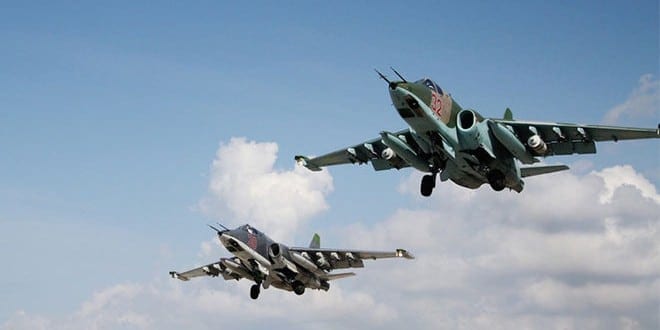
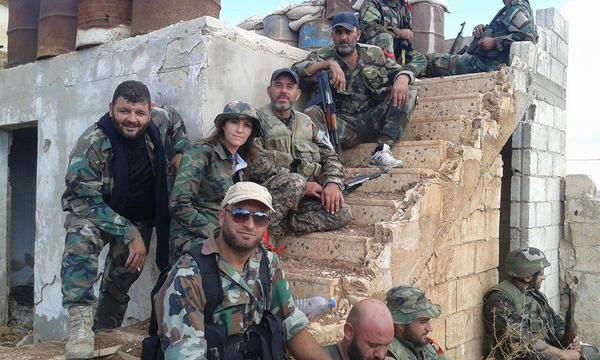
 (Click on image for best resolution.)
(Click on image for best resolution.) Andrew Korybko is an American political commentator currently working for the Sputnik agency. Hamsa Haddad is a Syrian researcher based in Moscow.
Andrew Korybko is an American political commentator currently working for the Sputnik agency. Hamsa Haddad is a Syrian researcher based in Moscow.![]() Nauseated by the
Nauseated by the